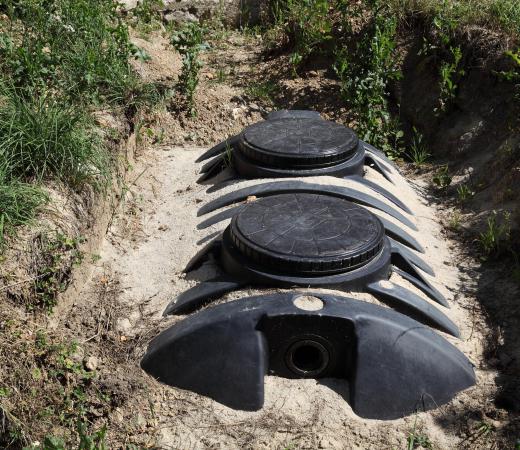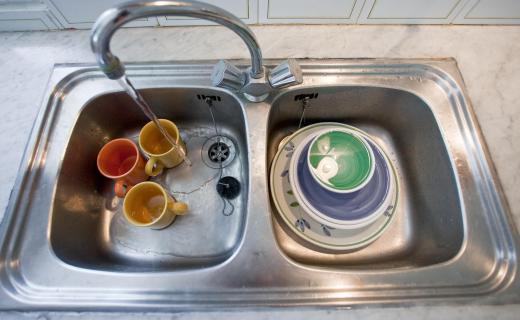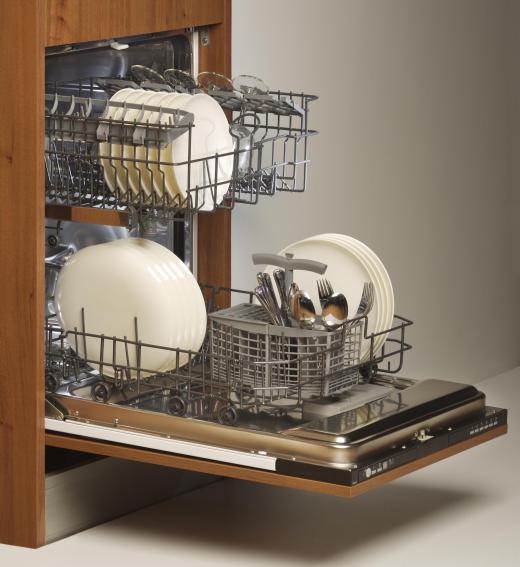A wet wall is a structural wall designed to house plumbing pipes for fixtures like sinks, dishwashers, and toilets. Running plumbing fixtures through the wall tends to be expensive, and consolidating them in a single wet wall can increase efficiency, cut down on building costs, and make it easier to repair plumbing problems in the future, as only one wall needs to be accessed. In new home design, architects and contractors may think ahead of time when it comes to fixture placement so they can use a single wet wall for shared fixtures.
The wall can contain piping of a variety of sizes. Below the wall, the pipes connect to water and sewer lines, or feed to a septic tank when sewer service is not available. The pipes rise inside the wall and can deliver water or carry waste away from either side. Commonly, a wet wall is built between a planned bathroom and kitchen, allowing them to share a wall, and all of the fixtures requiring water will be lined up on either side.

Some care must be taken when building a wet wall because it may be necessary to move or adjust joists to make room for piping. Usually, the wall is not structural and the joists are used primarily to support the wall, not the whole building. Special building materials may be used and are sometimes required so that in the event of a leak, some containment will be available. Sheet rock, for example, may be of a special design that can withstand getting wet. The wet wall will also need protective splashbacks in the room to prevent water from hitting the wall directly.

In a remodel, a contractor may recommend considering a wet wall design if one is not already being used. Sharing a wall can cut down on remodel costs, an important consideration for many people. It may require moving more things around than expected, but it also comes with some advantages. For example, the hot water line can be shortened, reducing the wait time for warm water when people turn on the taps.

When plumbing problems do develop and people need to access the piping in the walls, it will be in a central location, making it very easy to service. This can cut down on expenses associated with plumbing repair. In the event of leaks, costs for repairing water damage will also be reduced as the potential area for leakage will be reduced.
Ever since she began contributing to the site several years ago, Mary has embraced the exciting challenge of being a About Mechanics researcher and writer. Mary has a liberal arts degree from Goddard College and spends her free time reading, cooking, and exploring the great outdoors.

